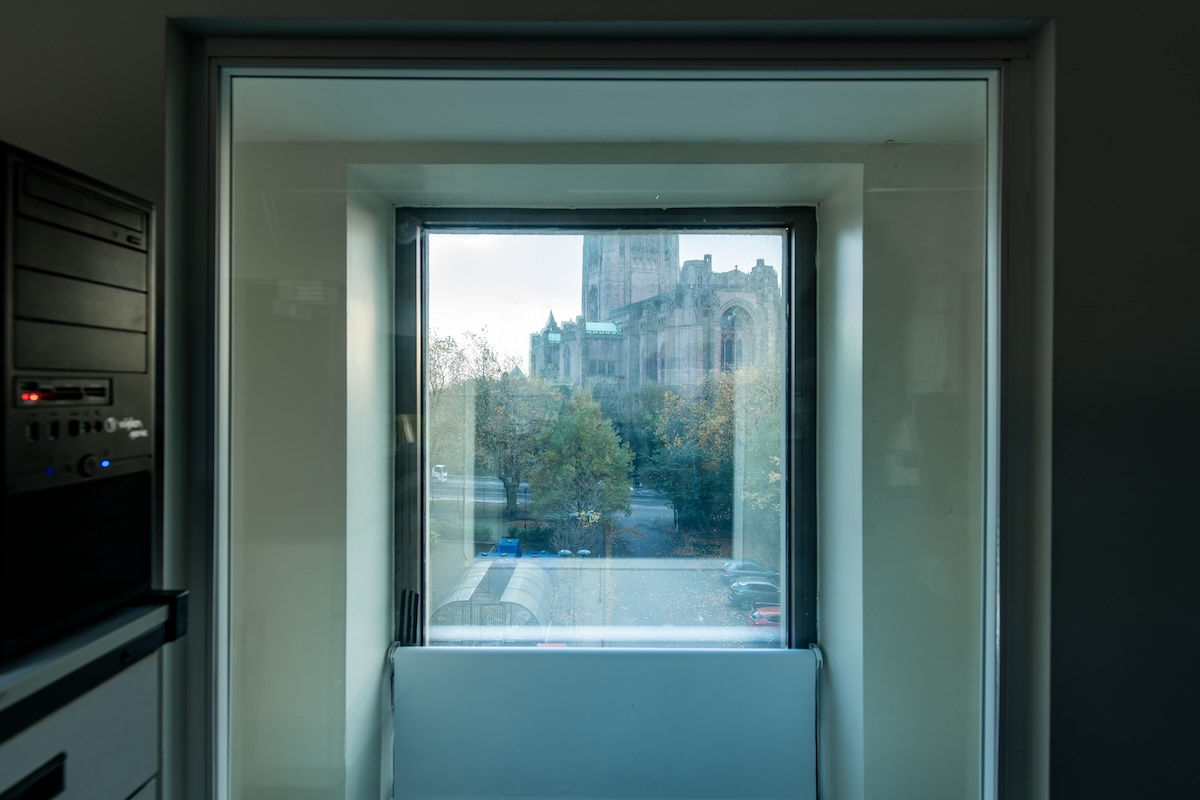In this article, we will look at the key considerations for the design and installation of a heating, ventilation and cooling system when it is being installed in a Grade One or Grade Two listed building or other ‘traditionally’ constructed building. As with any building, insulation is often the single biggest improvement available to improve heat loss, but could be problematic due to the building fabric and listing rules.
Designing and installing an HVAC system in a Grade One or Grade Two listed building, presents additional challenges due to the need to preserve the building’s historic fabric.

What follows are the key considerations that we consider when navigating insulation and HVAC installations in these often magnificent old and protected structures:
1. Preserving Historical Integrity
- Minimal Impact on Building Fabric: Listed buildings normally have original materials (stone, timber, plaster) that cannot be altered significantly. The HVAC design must avoid damaging or removing these materials, and insulation solutions must be non-invasive and in keeping with the structure itself.
- Reversibility: Any modifications, including insulation installation, should be reversible, ensuring that future conservation efforts can restore the building to its original state if necessary.
2. Approval and Regulatory Compliance
- Listed Building Consent: Any alterations to improve insulation or install HVAC systems must be approved by the local planning authority. This includes adding insulation materials to walls, floors, or roofs. Consent is crucial for Grade I and Grade II buildings, where even minor changes will almost certainly be covered by their protected status.
- Conservation Officer Consultation: Early consultation with a conservation officer ensures that insulation materials and methods are approved for use in listed buildings and do not conflict with preservation goals.
- Building Regulations Compliance: The installation of HVAC systems and insulation must comply with modern building regulations and may trigger ‘consequential improvements’ in other areas. However, listed buildings may have some exemptions, so work closely with experts to balance modern standards and historical preservation.
- EPC Rating compliance: The planned future changes in the EPC ratings we discussed here will affect almost very building with regards to their energy efficiency and thermal performance. As above there are some exceptions with listed buildings but you CANNOT assume that you will be exempt, just because the building has a listed status.

3. Insulation Challenges and Solutions
It is really important to work with heritage experts who understand the ‘building physics’ or how a traditional building will respond to new installations. Insulation will affect how the buildings breathe and how they respond to moisture both internally and externally. Poor advice and poorly considered interventions can cause damage to the building, affect internal environmental quality and cost thousands to rectify.
- Internal Wall Insulation:
- Challenges: Many listed buildings have decorative internal features (panelling, plasterwork, or historic paint schemes) that make internal wall insulation difficult or impossible. Installing internal insulation can also reduce room sizes, which may not be desirable or permissible.
- Solution: Consider breathable insulation materials, such as wood fibre or lime-based insulation, that protect against moisture build-up without damaging original walls. Insulation boards that are thin yet effective could potentially be installed behind existing wall finishes where alterations are allowed.
- External Wall Insulation:
- Challenges: External wall insulation is rarely an option in listed buildings, as it alters the building’s façade and appearance, which is often part of its historic character.
- Solution: Focus on other areas of heat loss, such as roofs or floors, instead of attempting external wall insulation. If allowed, discreet interventions like thin insulating render or treatments can be explored.
- Roof and Loft Insulation:
- Challenges: Roofs in listed buildings are often a major source of heat loss but may have historic timber structures or thatched roofs that require careful treatment.
- Solution: Roof insulation can often be installed without affecting the external appearance. Natural wool, wood fibre, or cellulose insulation are good options for roof spaces, as they are breathable and less likely to cause condensation or rot in historic timbers.
- Floor Insulation:
- Challenges: Floors in listed buildings may be original stone slabs, tiles, or timber that should not be lifted or altered.
- Solution: Underfloor insulation can sometimes be installed beneath floorboards if there is a crawl space, or through the use of breathable materials that don’t trap moisture. Rugs or carpets can provide additional insulation without altering the fabric of the building.

4. Ventilation Considerations
- Preventing Moisture Buildup: Historic buildings are often naturally ventilated and “breathe” through their materials. The very fact a building is ‘leaky’ has helped with its longevity. Adding insulation without addressing ventilation can cause moisture buildup, leading to damp or mould, which will damage the building in the longer term.
- Mechanical Ventilation with Heat Recovery (MVHR): Installing an MVHR system can help control moisture levels by providing fresh air without significant heat loss. These systems can be discreet and could, for example, be installed in less visible areas, such as attics, or integrated into existing ventilation shafts.
- Maintaining Original Windows: Many listed buildings have original windows that cannot be replaced or double-glazed. To address this, secondary glazing can be installed, or thermally insulating curtains can be used to reduce heat loss while preserving the appearance of original windows.
5. Energy Efficiency and Sustainability
- Integrating Passive Solutions: Listed buildings often have features like thick walls or high ceilings that can be leveraged to improve energy efficiency. Passive heating and cooling strategies, such as using existing window ventilation or optimising natural light, should be incorporated into the HVAC design.
- Zoning and Smart Controls: To reduce energy consumption, HVAC systems should include zoning that allows different areas of the building to be heated or cooled independently. Smart thermostats can regulate temperatures without unnecessary energy use, especially in larger historic buildings.
- Reduce before install: The secret to any successful renewable energy project is to get your energy usage under control first. This was exactly what happened with the work at Plas Newydd. Over a period of almost five years, they methodically worked through the building and the grounds making changes to lower energy lighting, improve insulation and even reducing water temperature in the hand wash areas and kitchens. All of this meant a much lower capacity system could be specified than would have been, so overall consumption was greatly reduced.

6. Discreet HVAC Installations
- Ductwork and Piping: When installing HVAC systems, we look to use existing voids, floor cavities, or ceiling spaces to conceal ductwork and pipes. Slimline or flexible ducting systems can reduce the need for invasive installations.
- Heat Pump Systems: Consider using air source or ground source heat pumps for heating and cooling, as these systems are energy efficient and can be installed with minimal impact on the building. Careful placement of external units (in non-visible areas) ensures that the appearance of the building is preserved.
7. Acoustic and Vibration Concerns
- Noise Control: HVAC systems can generate noise, which may disrupt the tranquil environment of a historic building. Low-noise equipment, damping and soundproofing strategies should be employed to minimise acoustic impact.
- Vibration Management: Mechanical systems can cause vibrations that may damage delicate plasterwork or structural elements. We would normally aim to use vibration-damping mounts and supports to prevent damage.

8. Heating Solutions for Listed Buildings
- Underfloor Heating: Where permissible, underfloor heating can be an effective way to heat listed buildings without interfering with their historic appearance. Modern underfloor heating systems can sometimes be installed under existing floors without raising floor levels significantly.
- Radiators and Heat Distribution: In cases where radiators are required, period-style radiators that match the building’s historic look can be considered. These can be every bit as efficient as their more obviously modern counterparts. Radiators can also be placed in less visually prominent areas to minimise their impact on the overall aesthetic.
9. Ongoing Maintenance and Monitoring
- Regular Maintenance: HVAC and insulation systems in listed buildings require ongoing maintenance to ensure they continue functioning effectively without damaging the building’s fabric. Monitoring for signs of moisture build-up, thermal leaks, or HVAC issues is essential.
- Monitoring Energy Efficiency: After installation, energy usage should be monitored to ensure the system is functioning as efficiently as possible, particularly in buildings where insulation improvements are restricted. Automatic systems that allow fresh air to enter, can easily be set up to open too readily and force the heating system to work overtime to bring the temperature back up to a comfortable level.

10. Consulting Specialists
- Heritage Specialists: Always involve heritage architects and consultants Like MMA Design & Project Management and HVAC engineers experienced in working with listed buildings like ourselves. This will ensure that insulation and HVAC systems are installed without compromising the building’s character and without causing unexpected issues with moisture movement.
- Experienced Contractors: Work with contractors who specialise in HVAC installations for heritage buildings, ensuring that the methods used are sympathetic to the historical context.
In summary, designing and installing an HVAC system for a listed building requires a careful balance between modern energy efficiency requirements and the preservation of the building’s historical integrity.
The use of reversible, minimally invasive methods and breathable, natural insulation materials is key to ensuring that both comfort and conservation goals are met.
If in doubt, assume you probably can’t do it if it can’t be easily reversed. We’re passionate about preserving our heritage and protecting our nationally recognised assets, but making them cheaper to run, more comfortable and accessible is vital for their long term usability and relevance.








